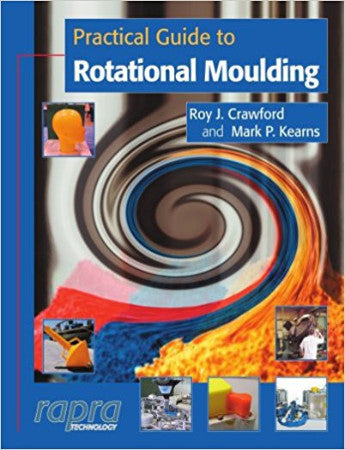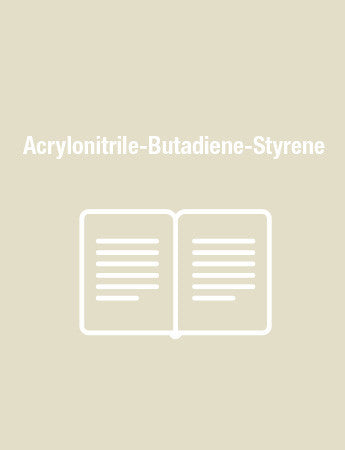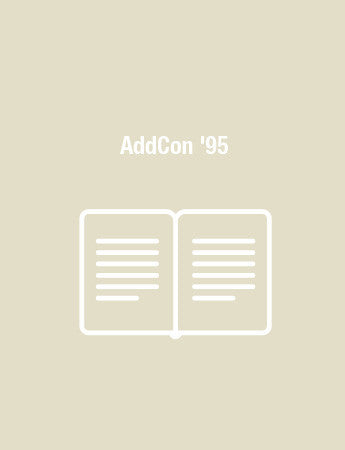Practical Guide to Rotational Molding
Rotational molding is a low pressure, a high temperature manufacturing method for producing hollow one-piece plastic parts. The molding process dates back hundreds of years to the Swiss use of the method to make hollow chocolate eggs. The technology involves aspects ranging from mould design to mould heating and cooling, and remolding methods. Not all materials are suitable for the process - resin and additive selection are critical.
Rotational moulding is a very competitive alternative to blow molding, thermoforming and injection molding for the manufacture of hollow plastic parts. It offers designers the chance to produce stress-free articles, with uniform wall thickness and complex shapes. Typical molded parts include bulk containers, tanks, canoes, toys, medical equipment, automotive parts, and ducts.
There are many advantages associated with rotational molding. Firstly, the moulds are relatively simple and cheap, because the process is low pressure, unlike injection molding. The wall thickness of parts is more uniform and it is possible to alter the wall thickness without changing the mould. Complex parts with undercuts ad intricate contours can be manufactured relatively easily. There is also very little waste as the required weight of plastic to produce the part is placed inside the mould.
This book – A Practical Guide to Rotational Molding – describes the basic aspects of rotational molding and includes information on the latest state of the art developments in the industry. A key feature of the approach is to use photographs wherever possible to illustrate the points that are being made. This book will be useful to those new to the industry, as well as those who are experienced in some aspects of the process.
The ever-changing nature of this industry means that it is very important for those involved in the manufacturing operation to keep abreast of the advances that are being made. The industry is becoming more competitive and customers are making increasing demands in terms of part quality and performance.
Rotational molding is becoming a highly sophisticated manufacturing method for plastic parts. New mould and machine features, and advanced process control technologies, are being developed. This gives designers, and end users, access to new opportunities to create novel and innovative plastic moldings. New technologies such as mould internal air temperature measurement, mould pressurization, and one shot foaming are now available.
Rotational moulding is a very competitive alternative to blow molding, thermoforming and injection molding for the manufacture of hollow plastic parts. It offers designers the chance to produce stress-free articles, with uniform wall thickness and complex shapes. Typical molded parts include bulk containers, tanks, canoes, toys, medical equipment, automotive parts, and ducts.
There are many advantages associated with rotational molding. Firstly, the moulds are relatively simple and cheap, because the process is low pressure, unlike injection molding. The wall thickness of parts is more uniform and it is possible to alter the wall thickness without changing the mould. Complex parts with undercuts ad intricate contours can be manufactured relatively easily. There is also very little waste as the required weight of plastic to produce the part is placed inside the mould.
This book – A Practical Guide to Rotational Molding – describes the basic aspects of rotational molding and includes information on the latest state of the art developments in the industry. A key feature of the approach is to use photographs wherever possible to illustrate the points that are being made. This book will be useful to those new to the industry, as well as those who are experienced in some aspects of the process.
The ever-changing nature of this industry means that it is very important for those involved in the manufacturing operation to keep abreast of the advances that are being made. The industry is becoming more competitive and customers are making increasing demands in terms of part quality and performance.
Rotational molding is becoming a highly sophisticated manufacturing method for plastic parts. New mould and machine features, and advanced process control technologies, are being developed. This gives designers, and end users, access to new opportunities to create novel and innovative plastic moldings. New technologies such as mould internal air temperature measurement, mould pressurization, and one shot foaming are now available.
Preface
Chapter 1 – Introduction to the Rotational Molding Process
1.1 Introduction
1.2 The Rotational Molding Process
1.3 Overview of Rotational Molding
1.4 Special Nature of Rotational Molding
1.5 Advantages of Rotational Molding
1.6 Disadvantages of Rotational Molding
1.7 Common Applications for Rotomoulded Products
1.7.1 Material Handling Products
1.7.2 Industrial Products
1.7.3 Environmental Products
1.7.4 Leisure Products
1.7.5 Marine Products
1.7.6 Road Signage
Bibliography
Chapter 2 – Moulds
2.1 Introduction
2.2 Mould Materials
2.3 Sheet Steel
2.4 Aluminium
2.5 Electroformed Nickel
2.6 Comparison Between Mould Materials
2.7 Mould Design
2.7.1 Mould Frame
2.7.2 Molded-in Inserts
2.7.3 Molded-in Handles
2.7.4 Temporary Inserts
2.7.5 Movable Cores
2.7.6 Threads
2.7.7 Mould Venting
2.7.8 Mould Surface Finish
2.8 Mould Release
2.8.1 Mould Preparation for Release Agent
2.8.2 Reactive Systems
2.8.2.1 Spray-on Zinc Stearates
2.8.2.2 Silicones
2.8.2.3 Disiloxanes
2.8.3 Conventional Systems
2.8.4 Permanent Systems
2.8.5 Hybrid Systems
2.9 Mould Cooling
2.10 Mould Ancillaries
2.11 Molding Aids
2.12 Kiss-Offs
2.13 Calculation of Charge Weight
Chapter 3 - Rotational Molding Machinery
3.1 Introduction
3.2 Types of Rotational Molding Machines
3.2.1 Carousel Machines
3.2.2 Shuttle Machines
3.2.3 Clamshell Machines
3.2.4 Rock and Roll Machines
3.2.5 Other Types of Machines
3.3 Mould Swing
3.4 Mould Speed
3.5 Speed Ratio
3.6 Oven Air Flow Amplification
3.7 Cooling
3.8 Developments in Machine Control
3.9 Internal Air Temperature Measurement in Rotational Molding
3.10 Preparation of Rotolog for Molding Trials
3.11 Monitoring Pressure Inside a Mould
Bibliography
Chapter 4 – Materials for Rotational Molding
4.1 Introduction
4.2 Typical Characteristics of Rotationally Molded Plastics
4.3 Materials Used in Rotational Molding
4.4 Polyethylene
4.4.1 Low Density Polyethylene (LDPE)
4.4.2 High Density Polyethylene (HDPE)
4.4.3 Medium Density Polyethylene (MDPE)
4.4.4 Linear Low Density Polyethylene (LLDPE)
4.4.5 Metallocene Polyethylene
4.4.6 Ethylene-Vinyl Acetate (EVA)
4.4.7 Ethylene-Butyl Acrylate (EBA)
4.5 Polypropylene (PP)
4.6 Polyamides (Nylons)
4.6.1 Nylon 6
4.6.2 Nylon 11 and Nylon 12
4.6.3 Reaction Injection Molding (RIM) Nylon
4.7 Amorphous Materials
4.7.1 Polyvinyl Chloride (PVC)
4.7.2 Fluoropolymers
4.8 Other Plastics
4.9 Additives Used in Rotational Molding Materials
4.9.1 Fillers
4.9.2 Plasticizers
4.9.3 Lubricants
4.9.4 Stabilizers
4.9.5 Anti-Oxidants
4.9.6 Ultraviolet Stabilizers
4.9.7 Flame Retardants
4.9.8 Crosslinking Agents
4.9.9 Foaming Agents
4.9.10 Pigments
4.10 Powders for Rotational Molding - Grinding or Pulverizing
4.10.1 Introduction
4.11 Particle Size Distribution
4.12 Dry Flow
4.13 Bulk Density
4.14 Factors Affecting Powder Quality
4.14.1 Gap Size
4.14.2 Number of Mill Teeth
4.14.3 Grinding Temperature
4.15 Micropelletising
4.16 Coloring of Plastics for Rotational Molding
4.17 Types of Pigments
Bibliography
Chapter 5 – Quality Control in Rotational Molding
5.1 Introduction
5.2 Wall Thickness Distribution
5.3 Shrinkage
5.3.1 Shrinkage Guidelines
5.3.2 Control of Shrinkage
5.3.2.1 Effect of Release Point on Shrinkage
5.3.2.2 Other Factors Affecting Shrinkage
5.4 Warpage
5.4.1 Control of Warpage
5.5 Residual Stress
5.5.1 Short-Term Effects of Residual Stresses
5.5.2 Long-Term Effects of Residual Stresses
5.5.3 Cures for Residual Stress Problems
5.6 Surface Decoration
5.6.1 Painting
5.6.2 Hot Stamping
5.6.3 Adhesives
5.6.4 In-Mould Decoration
5.6.5 Post Molding Decoration
5.7 Foaming in Rotational Molding
5.7.1 Chemical Blowing Agent Technology
5.7.2 Design of Foamed Sections
5.7.3 Solid/Foam Cross-Sections
5.7.4 Solid/Foam/Solid Cross-Sections
Bibliography
Chapter 6 – The Future for Rotational Molding
6.1 Materials
6.2 Moulds
6.3 Molding Equipment
6.4 The Challenges
6.5 The Role that the Molder Must Play
6.6 The Role that the Suppliers Must Play
Abbreviations and Acronyms
Index
Chapter 1 – Introduction to the Rotational Molding Process
1.1 Introduction
1.2 The Rotational Molding Process
1.3 Overview of Rotational Molding
1.4 Special Nature of Rotational Molding
1.5 Advantages of Rotational Molding
1.6 Disadvantages of Rotational Molding
1.7 Common Applications for Rotomoulded Products
1.7.1 Material Handling Products
1.7.2 Industrial Products
1.7.3 Environmental Products
1.7.4 Leisure Products
1.7.5 Marine Products
1.7.6 Road Signage
Bibliography
Chapter 2 – Moulds
2.1 Introduction
2.2 Mould Materials
2.3 Sheet Steel
2.4 Aluminium
2.5 Electroformed Nickel
2.6 Comparison Between Mould Materials
2.7 Mould Design
2.7.1 Mould Frame
2.7.2 Molded-in Inserts
2.7.3 Molded-in Handles
2.7.4 Temporary Inserts
2.7.5 Movable Cores
2.7.6 Threads
2.7.7 Mould Venting
2.7.8 Mould Surface Finish
2.8 Mould Release
2.8.1 Mould Preparation for Release Agent
2.8.2 Reactive Systems
2.8.2.1 Spray-on Zinc Stearates
2.8.2.2 Silicones
2.8.2.3 Disiloxanes
2.8.3 Conventional Systems
2.8.4 Permanent Systems
2.8.5 Hybrid Systems
2.9 Mould Cooling
2.10 Mould Ancillaries
2.11 Molding Aids
2.12 Kiss-Offs
2.13 Calculation of Charge Weight
Chapter 3 - Rotational Molding Machinery
3.1 Introduction
3.2 Types of Rotational Molding Machines
3.2.1 Carousel Machines
3.2.2 Shuttle Machines
3.2.3 Clamshell Machines
3.2.4 Rock and Roll Machines
3.2.5 Other Types of Machines
3.3 Mould Swing
3.4 Mould Speed
3.5 Speed Ratio
3.6 Oven Air Flow Amplification
3.7 Cooling
3.8 Developments in Machine Control
3.9 Internal Air Temperature Measurement in Rotational Molding
3.10 Preparation of Rotolog for Molding Trials
3.11 Monitoring Pressure Inside a Mould
Bibliography
Chapter 4 – Materials for Rotational Molding
4.1 Introduction
4.2 Typical Characteristics of Rotationally Molded Plastics
4.3 Materials Used in Rotational Molding
4.4 Polyethylene
4.4.1 Low Density Polyethylene (LDPE)
4.4.2 High Density Polyethylene (HDPE)
4.4.3 Medium Density Polyethylene (MDPE)
4.4.4 Linear Low Density Polyethylene (LLDPE)
4.4.5 Metallocene Polyethylene
4.4.6 Ethylene-Vinyl Acetate (EVA)
4.4.7 Ethylene-Butyl Acrylate (EBA)
4.5 Polypropylene (PP)
4.6 Polyamides (Nylons)
4.6.1 Nylon 6
4.6.2 Nylon 11 and Nylon 12
4.6.3 Reaction Injection Molding (RIM) Nylon
4.7 Amorphous Materials
4.7.1 Polyvinyl Chloride (PVC)
4.7.2 Fluoropolymers
4.8 Other Plastics
4.9 Additives Used in Rotational Molding Materials
4.9.1 Fillers
4.9.2 Plasticizers
4.9.3 Lubricants
4.9.4 Stabilizers
4.9.5 Anti-Oxidants
4.9.6 Ultraviolet Stabilizers
4.9.7 Flame Retardants
4.9.8 Crosslinking Agents
4.9.9 Foaming Agents
4.9.10 Pigments
4.10 Powders for Rotational Molding - Grinding or Pulverizing
4.10.1 Introduction
4.11 Particle Size Distribution
4.12 Dry Flow
4.13 Bulk Density
4.14 Factors Affecting Powder Quality
4.14.1 Gap Size
4.14.2 Number of Mill Teeth
4.14.3 Grinding Temperature
4.15 Micropelletising
4.16 Coloring of Plastics for Rotational Molding
4.17 Types of Pigments
Bibliography
Chapter 5 – Quality Control in Rotational Molding
5.1 Introduction
5.2 Wall Thickness Distribution
5.3 Shrinkage
5.3.1 Shrinkage Guidelines
5.3.2 Control of Shrinkage
5.3.2.1 Effect of Release Point on Shrinkage
5.3.2.2 Other Factors Affecting Shrinkage
5.4 Warpage
5.4.1 Control of Warpage
5.5 Residual Stress
5.5.1 Short-Term Effects of Residual Stresses
5.5.2 Long-Term Effects of Residual Stresses
5.5.3 Cures for Residual Stress Problems
5.6 Surface Decoration
5.6.1 Painting
5.6.2 Hot Stamping
5.6.3 Adhesives
5.6.4 In-Mould Decoration
5.6.5 Post Molding Decoration
5.7 Foaming in Rotational Molding
5.7.1 Chemical Blowing Agent Technology
5.7.2 Design of Foamed Sections
5.7.3 Solid/Foam Cross-Sections
5.7.4 Solid/Foam/Solid Cross-Sections
Bibliography
Chapter 6 – The Future for Rotational Molding
6.1 Materials
6.2 Moulds
6.3 Molding Equipment
6.4 The Challenges
6.5 The Role that the Molder Must Play
6.6 The Role that the Suppliers Must Play
Abbreviations and Acronyms
Index
Professor Roy J.CRAWFORD FREng B.Sc., Ph.D., D.Sc., FIMechE., FIM
Queen's University, Belfast
Professor Roy Crawford obtained a first-class honors degree in Mechanical Engineering from the Queen's University of Belfast in 1970. He went on to obtain a Ph.D. degree relating to the processing and properties of plastics in 1973. He obtained a DSc degree for research work on plastics in 1987. Over the past 30 years, he has concentrated on studying the processing behavior of plastics. He has published over 250 papers in learned journals and conferences during this time. He is the author of 7 textbooks on plastics and engineering materials.
Roy Crawford is currently Pro Vice-Chancellor for Research and Development and Professor of Engineering Materials at Queen's University Belfast. From 1997 to 1999 he was Director of the Polymer Processing Research Centre at Queen's University. This Centre was established on the basis of the international reputation of the Rotational Molding Research Centre that he initiated at the University.
He has been awarded a number of prizes for the high quality of his research work. In 1996 he received the prestigious Netlon Medal from the Institute of Materials for innovative contributions to the molding of plastics. He is Technical Director for the Association of Rotational Molders in Chicago, USA and Technical Editor for the Rotation Magazine, published in the USA.
M. P. KEARNS B.Eng., M.Phil., C.Eng., MIChemE
Queen's University, Belfast
Mark Kearns is the Rotational Molding Research Manager of the Polymer Processing Research Centre at Queen’s University, Belfast. He is a Chartered Chemical Engineer with an M.Phil Degree in Rotational Molding. He manages rotational molding research and development projects for companies and institutions across Europe, Australasia, and North America, and organizes the Association of Rotational Molders - sponsored, ‘Advanced Rotational Molding Training Seminars’ both in Belfast and North America. Mark has spent over ten years in rotational molding research, initially in Industry as a Development Engineer and Deputy Production Manager. He has published over 50 papers and conference proceedings on rotational molding and has delivered lectures on rotational molding in North America, Asia, Africa and Europe.
Queen's University, Belfast
Professor Roy Crawford obtained a first-class honors degree in Mechanical Engineering from the Queen's University of Belfast in 1970. He went on to obtain a Ph.D. degree relating to the processing and properties of plastics in 1973. He obtained a DSc degree for research work on plastics in 1987. Over the past 30 years, he has concentrated on studying the processing behavior of plastics. He has published over 250 papers in learned journals and conferences during this time. He is the author of 7 textbooks on plastics and engineering materials.
Roy Crawford is currently Pro Vice-Chancellor for Research and Development and Professor of Engineering Materials at Queen's University Belfast. From 1997 to 1999 he was Director of the Polymer Processing Research Centre at Queen's University. This Centre was established on the basis of the international reputation of the Rotational Molding Research Centre that he initiated at the University.
He has been awarded a number of prizes for the high quality of his research work. In 1996 he received the prestigious Netlon Medal from the Institute of Materials for innovative contributions to the molding of plastics. He is Technical Director for the Association of Rotational Molders in Chicago, USA and Technical Editor for the Rotation Magazine, published in the USA.
M. P. KEARNS B.Eng., M.Phil., C.Eng., MIChemE
Queen's University, Belfast
Mark Kearns is the Rotational Molding Research Manager of the Polymer Processing Research Centre at Queen’s University, Belfast. He is a Chartered Chemical Engineer with an M.Phil Degree in Rotational Molding. He manages rotational molding research and development projects for companies and institutions across Europe, Australasia, and North America, and organizes the Association of Rotational Molders - sponsored, ‘Advanced Rotational Molding Training Seminars’ both in Belfast and North America. Mark has spent over ten years in rotational molding research, initially in Industry as a Development Engineer and Deputy Production Manager. He has published over 50 papers and conference proceedings on rotational molding and has delivered lectures on rotational molding in North America, Asia, Africa and Europe.




